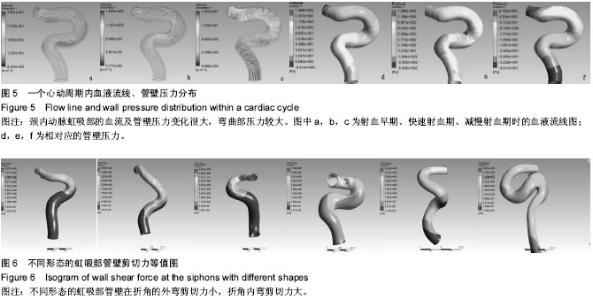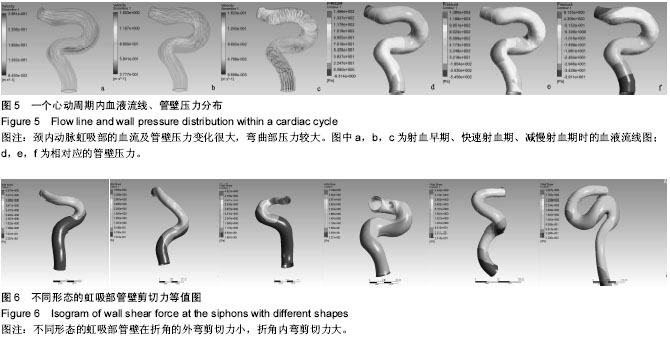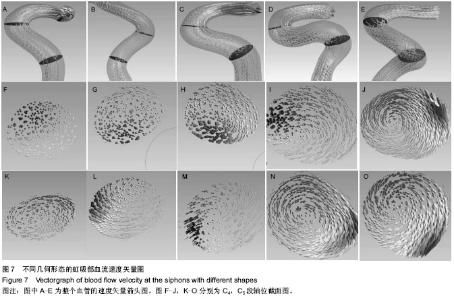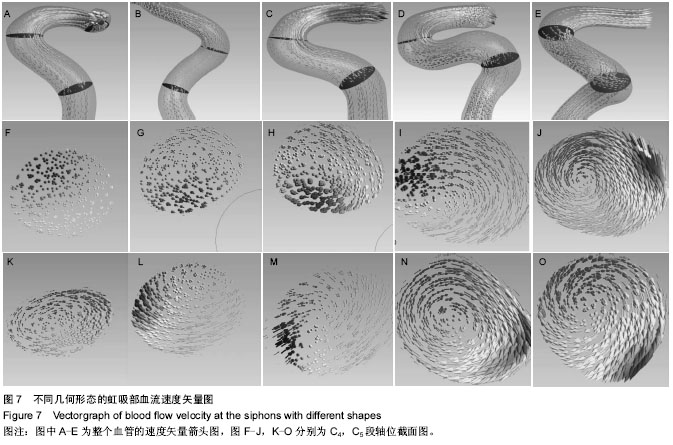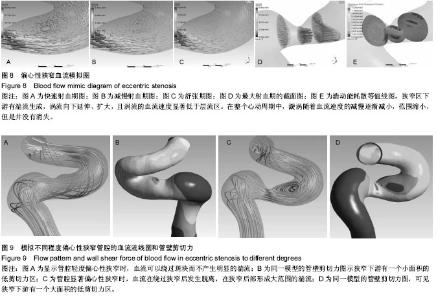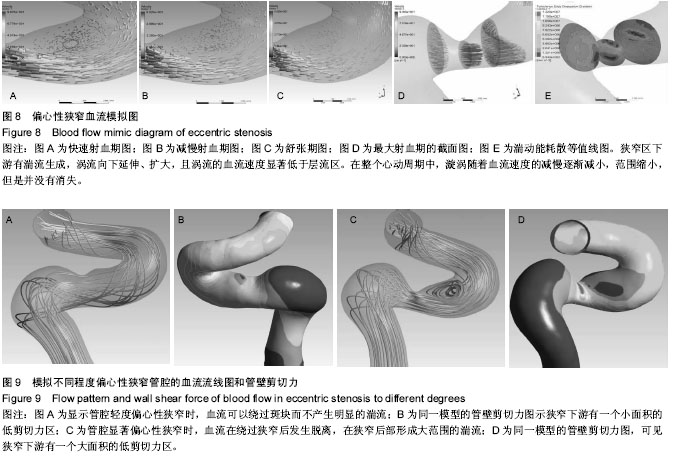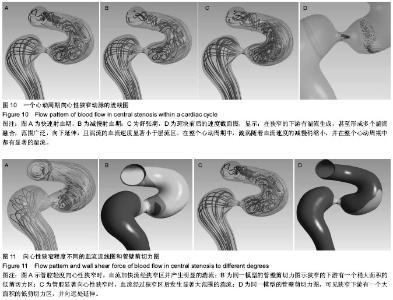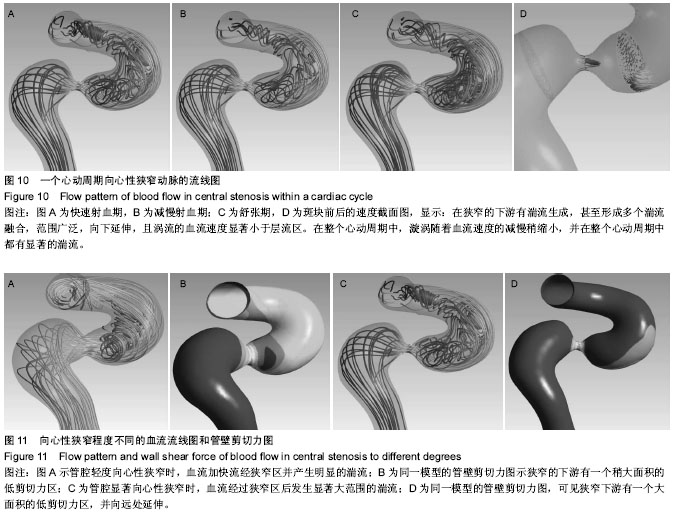| [1] Ozwik K, Obidowski D. Numerical simulations of the blood flow through vertebral arteries. J Biomech. 2010;43(2): 177-185.
[2] Lee SW, Antiga L, Spence JD, et al. Geometry of the carotid bifurcation predicts its exposure to disturbed flow. Stroke. 2008;39(8):2341-2347.
[3] Soulis JV, Giannoglou GD, Chatzizisis YS, et al. Spatial and phasic oscillation of non-Newtonian wall shear stress in human left coronary artery bifurcation: an insight to atherogenesis. Coron Artery Dis. 2006;17(4):351-358.
[4] 姚君.基于医学图像的有限元自动建模若干关键问题的研究[D].上海:上海交通大学,2008.
[5] 刘有军,乔爱科,黄伟,等.血流动力学数值模拟与动脉粥样硬化研究进展[J].力学进展,2002,32(3):435-443.
[6] Liepsch D. An introduction to biofluid mechanics basic models and applications. J Biomech. 2002;35(4):415-435
[7] Resnick N, Yahav H, Shay-Salit A, et al. Fluid shear stress and the vascular endothelium: for better and for worse. Prog Biophys Mol Biol. 2003;81:177-199.
[8] Chiu JJ, Chen LJ, Chen CN, et al. A model for studying the effect of shear stress on interactions between vascular endothelial cells and smooth muscle cells. J Biomech. 2004; 37:531-539.
[9] Chatzizisis YS, Jonas M, Coskun AU, et al. Prediction of the localization of high-risk coronary atherosclerotic plaques on the basis of low endothelial shear stress: an intravascular ultrasound and histopathology natural history study. Circulation. 2008;117(8):993-1002.
[10] Schnittler HJ. Structural and functional aspects of intercellular junctions in vascular endothelium. Basic Res Cardiol. 1998;93 Suppl 3:30-39.
[11] 陈槐卿.血液流变学及临床应用[M].成都:四川教育出版社,1989.
[12] 王盛章,陈家亮,鲁刚,等.基于三维医学图像的脑动脉瘤内血液流动的数值模拟[J].医用生物力学,2009,24(6):418-426.
[13] 谢龙汉,赵新宇,张炯明.ANSYS CFX流体分析及仿真[M].北京:电子工业出版社,2012:12-22.
[14] 舒强,金鑫,凌光烈,等.高、低剪切力对内皮细胞紧密连接的影响[J].中国病理生理杂志,2001,17(9):862-865.
[15] 罗成,庄明华.血流剪切力在动脉粥样硬化中所起的作用[J]中国现代医生,2010,48(9):13-14.
[16] Chiu JJ, Chen LJ, Chang SF, et al. Shear stress inhibits smooth muscle cell-induced inflammatory gene expression in endothelial cells: role of F-kappaB. Arterioscler Thromb Vasc Biol. 2005;25(5):963-969.
[17] Merten M, Chow T, Hellums JD, et al. A new role for P-selectin in shear-induced platelet aggregation. Circulation. 2000; 102(17): 2045-2050.
[18] Brooks AR, Lelkes PI, Rubanyi GM. Gene expressionprofiling of vascular endothelial cells exposed tofluid mechanical forces: relevance for focal susceptibilityto atherosclerosis. Endothelium. 2004;11:45-57.
[19] Bartoli CR, Spence PA, Siess T, et al. Nonphysiologic blood flow triggers endothelial and arterial remodeling in vivo: implications for novel left ventricular assist devices with a peripheral anastomosis. J Thorac Cardiovasc Surg. 2014; 148(1):311-321.
[20] Hajra L, Evans AI, Chen M, et al. The NF-kappa Bsignal transduction pathway in aortic endothelialcells is primed for activation in regions predisposedto atherosclerotic lesion formation. Proc Natl Acad Sci U S A. 2000;97:9052-9057.
[21] Ni CW, Hsieh HJ, Chao YJ, et al. Shear flow attenuates serum-induced STAT3 activation in endothelial cells.J Biol Chem 2003;278:19702-19708.
[22] Stonebridge PA, Brophy CM. Spiral laminar flow in arteries. Lancet. 1991;338(8779):1360-1361.
[23] 刘肖,孙安强,占帆,等.动脉血流旋动原理在人造血管研制和血管移植术中的应用[J].医用生物力学,2010,25(5):334-337.
[24] 田作军,刘磊,董亚贤,等.影响颈动脉斑块形成因素的临床分析[J].中华神经医学杂志,2008,7(11):1168-1173.
[25] 翟丽华,董少红,李光展,等.高血压病患者动态脉压与颈动脉粥样硬化关系的研究[J].中国动脉硬化杂志,2001,9(2):143-145.
[26] 范薇,黄久仪,汪昕,等.血压水平与颈动脉血流速度的关系[J].中华老年心脑血管病杂志,2007,9(10):677-679.
[27] Anayiotos AS, Pedroso PD, Eleftheriou EC, et al. Effect of a flow-streamlining implant at the distal anastomosis of a coronary artery bypass graft. Ann Biomed Eng. 2002;30: 917-926.
[28] Longest PW, Kleinstreuer C. Particle-hemodynamics modeling of the distal end-to-side femoral bypass: effects of graft caliber and graft-end cut. Med Eng Phys. 2003;25: 843-858.
[29] Ku DN, Zarins CK, Giddens DP, et al. Pulsatile flow and atherosclerosis in the human carotid bifurcation: positive correlation between plaque localization and low and oscillating shear stress. Arteriosclerosis. 1985;5:292-302.
[30] 邱晓宁,费智敏,施圣贤,等.颈动脉支架植入术治疗颈动脉狭窄效果的数值模拟[J].上海交通大学学报(医学版),2012,7:961-965.
[31] 袁玮,陈忠利.颈动脉血液动力学的数值模拟[J].中国组织工程研究,2014,42:6784-6788.
[32] 章德发,刘莹,毕勇强,等.不同狭窄率的颈动脉内血流动力学数值模拟[J].中国老年学杂志,2015,7:1872-1875.
[33] Griessenauer CJ, Yalcin B, Matusz P, et al. Analysis of the tortuosity of the internal carotid artery in the cavernous sinus. Childs Nerv Syst. 2015;31(6):941-944.
[34] Zhang C, Xie S, Li S, et al. Flow patterns and wall shear stress distribution in human internal carotid arteries: the geometric effect on the risk for stenoses. J Biomech. 2012; 45(1):83-89.
[35] Zhang C, Pu F, Li S , et al. Geometric classification of the carotid siphon: association between geometry and stenoses. Surg Radiol Anat. 2013;35(5):385-394.
[36] 袁中华,杨永宗,尹卫东,等.Adipophilin 在动脉粥样硬化病变和脂质负荷细胞中的作用研究[J].生物化学与生物物理进展,2003, 30(4):549-554.
|
